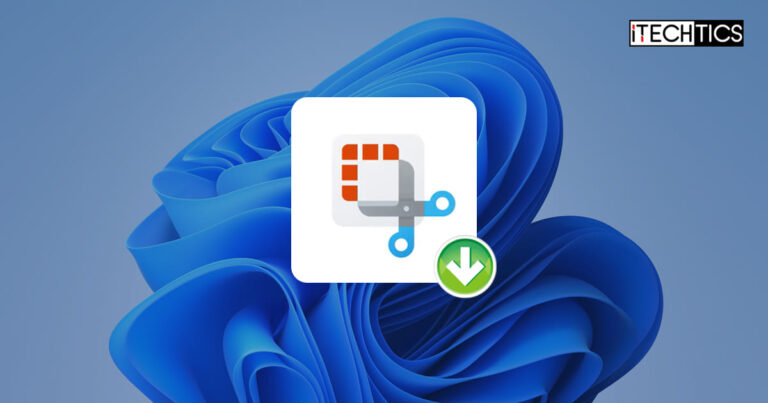Windows 11 comes with a free snipping tool, formerly known as “Snip & Sketch”. This snipping tool allows you to capture and edit screenshots on your Windows PC. However, there have been reports of the snipping tool missing when you upgrade to Windows 11.
If you are experiencing a similar issue, this guide post shows you how to download and install the snipping tool again.
Table of Contents
Table of Contents
What is the Snipping Tool for Windows 11, 10?
Snipping Tool is a free screen capture utility built into Windows and Windows 11. You can take a screenshot of the complete screen, capture portions of the screen (like app windows), or any custom shape on the screen. You can also add annotations to the screen capture. The Snipping Tool is preinstalled with Windows and can be run by pressing the Windows Key + Shift + S keyboard shortcut keys.
The captured screenshot is then saved to the clipboard and can be edited using the Snipping Tool editor.

The Snipping Tool was previously known as “Snip & Sketch.” However, since Windows 11 was launched in 2021, its UI has been redesigned to be more in tone with the OS. With the Snipping Tool, you can take screenshots without installing any third-party software. It also acts as a good editing tool.
If your PC is missing the Sniping Tool, all you need to do is download it from Microsoft Store. But before we do that, let us go over the minimum system requirements.
Download and Install the Snipping Tool
Follow the given steps below to download and install the Snipping Tool using the method of your choice:
Using Microsoft Store
-
Open the official Snipping Tool Microsoft Store page using any web browser.
-
Click on “Get in Store app.”

Get the app from the Microsoft store -
Click “Open Microsoft Store” if prompted for permission.

Give permission to open Microsoft Store app The Microsoft Store app should now be open.
-
Click “Install.”

Install Snipping Tool The Windows Snipping Tool will now begin downloading and then installing.
-
Once it is installed, click “Open.”

Run Snipping Tool
Using Direct Download
-
Open the Google Drive link for Snipping Tool and download the whole file.

Download the Snipping Tool from Google Drive -
Run the downloaded MSIX file.

Run the downloaded Snipping Tool file The installation wizard will now launch.
-
Click “Install.”

Install Snipping Tool
The Snipping Tool app will now be installed on your PC and run automatically.

Snipping Tool Minimum System Requirements
Your system must meet these minimum system requirements to be able to run Snipping Tool successfully:
- PC should be running Windows 10 version 22000.0 or higher.
- The processor you are using should be Core i5 5th Gen or later.
- RAM should be at least 512 MB or bigger.
- Available space on your PC should be at least 1GB.
How to Use the Snipping Tool
You can launch the Snipping Tool by pressing the Windows Key + Shift + S shortcut keys, or by searching for it in the Start menu.

When the tool is run, you can select which mode to choose.

Selecting “New” will allow you to capture any selected area on the screen in a rectangle. However, you can change it to Window mode, Full-Screen mode, or Free-Form mode from the drop-down menu in the middle.
Each of these modes has a different purpose. Window mode automatically selects an entire app window, while Full-Screen mode captures the entire screen across all connected monitors.
If you select Free-Form mode, you can make your selection of the captured area in any shape or size. Here is an example of what we captured using Free-Form mode:

Additionally, you can also select a timer (delay) from the top menu inside the Snipping Tool using the first drop-down menu from the right. This allows you to capture the screen automatically after a certain time after the area has been selected.
Snipping Tool also allows you to save, share, and even print the captured image.
That being said, if you opt to use an alternative to capture your screen or don’t capture it at all, you can uninstall the Snipping Tool.
How to Uninstall Snipping Tool
Follow these steps to uninstall Snipping Tool on Windows 11:
-
Navigate to:
Settings app >> Apps >> Installed Apps
-
Search for “Snipping Tool.”

Search for Snipping Tool -
Right-click the 3 dots in front of “Snipping Tool.”

Click on the ellipses -
Click “Uninstall.”

Click Uninstall -
Click “Uninstall” again.

Confirm uninstallation
Snipping Tool will now be removed from your computer.
Closing Words
Snipping Tool is a convenient tool to use to screenshot, share, and save. However, there are many alternatives available today that perform the same or better than the Snipping Tool, like Snagit, LightShot, etc. For example, we use Snagit, as it has integrated shape insertions and other cool features that fit our needs.
That said, the Snipping Tool is Microsoft’s product. Therefore, it is safe to use and light on the Windows OS.






